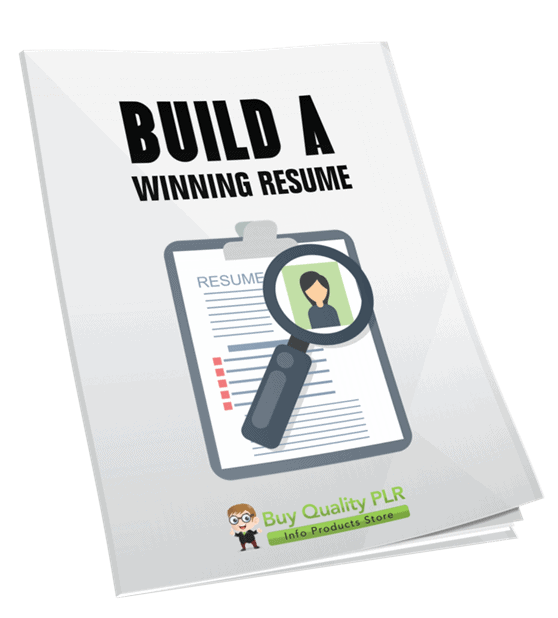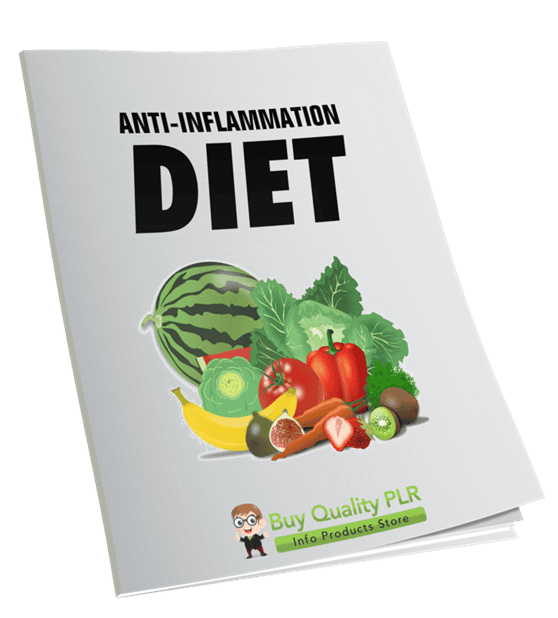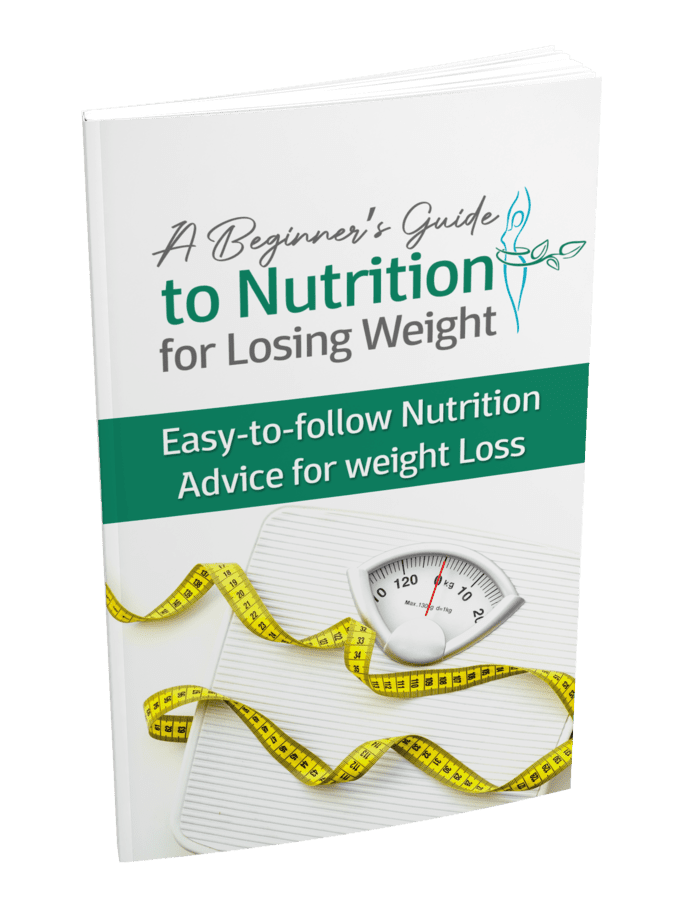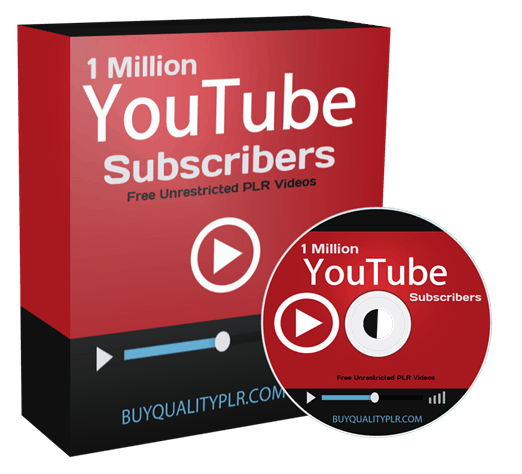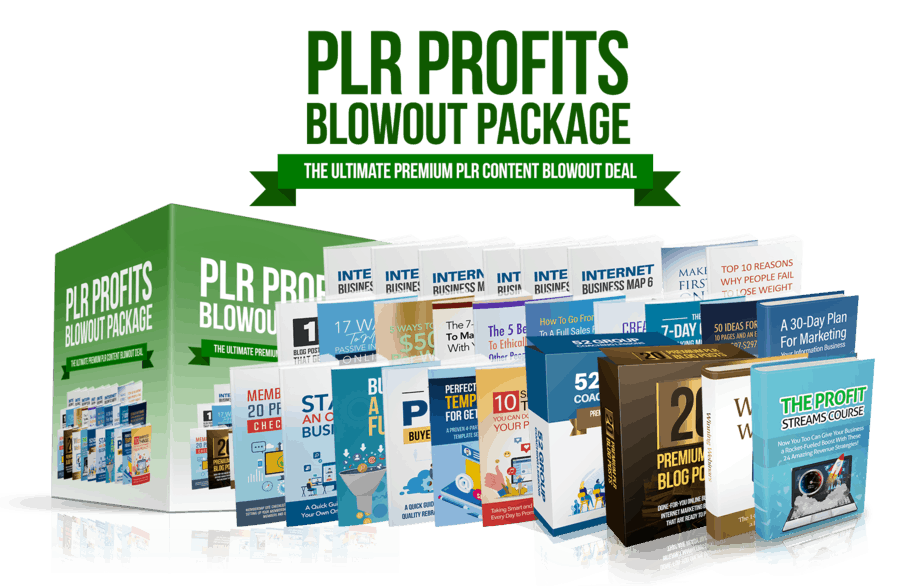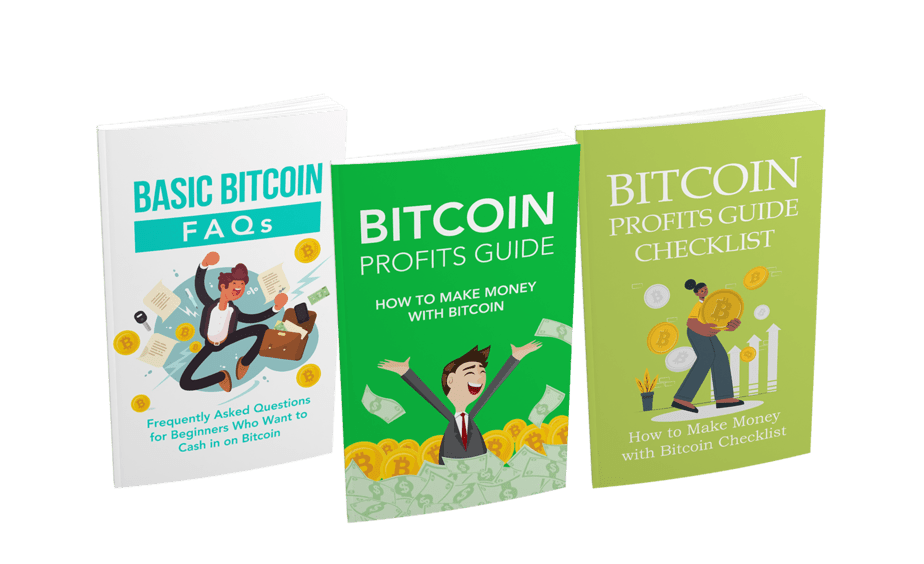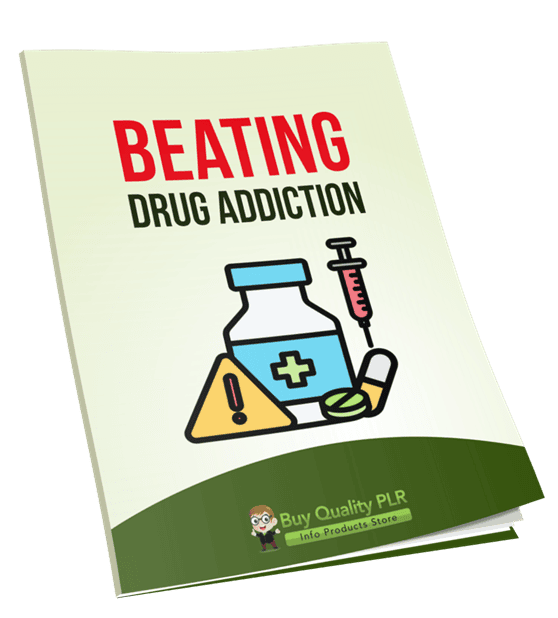
Beating Drug Addiction PLR Course 24k Words
in Addiction PLR , PLR Checklists , PLR eBooks , PLR eCourses , PLR List Building Reports , Premium PLR , Premium PLR eBooks , Premium PLR Reports , Premium White Label Brandable PLR Coaching Courses , Private Label Rights Products , Wellness PLR , Wellness PLR eBooksChoose Your Desired Option(s)
has been added to your cart!
have been added to your cart!
#drugaddiction #drugaddictionrecovery #healthandwellness #addictionhelp #plrcontent #recoverysupport #plrcourse #mentalhealthawareness
A Complete 22,214-Word Done-for-You Training Program That Helps People Break Free Naturally, Safely, and for Good
Are you looking for a powerful, meaningful, high-demand PLR course you can sell, teach, or repurpose immediately?
Are you building a brand in the wellness, mental health, recovery, alternative therapy, or self-improvement space—and need high-quality content your audience will trust?
Do you want a complete, step-by-step course that guides people through natural, holistic, non-medicated recovery from drug addiction?
If yes, this PLR package gives you everything you need to launch a high-impact product instantly.
Introducing the Beating Drug Addiction Naturally and Effectively PLR Course—
a deeply compassionate, research-backed, 22,214-word training designed to help people overcome addiction without relying on harmful substitutes or replacement drugs.
This is a sensitive, high-value niche with lifelong demand.
People are desperately searching for:
✔ Natural recovery strategies
✔ Emotional healing methods
✔ How to detox safely at home
✔ How to manage cravings naturally
✔ Holistic tools for long-term prevention
✔ Ways to support loved ones through addiction
✔ Education without judgment, shame, or stigma
This course delivers all of that—with professionalism, empathy, and actionable guidance.
And you get full private label rights to rebrand it, sell it, teach it, or use it in your membership programs.
Presenting…
Beating Drug Addiction PLR Course 24k Words
Why This PLR Course Is So Valuable (And Will Sell Exceptionally Well)
While most addiction resources rely on:
– Harsh clinical language
– Medical detoxing
– Medication-based substitutes
– One-size-fits-all approaches
This course takes a natural, holistic, lifestyle-centered approach,
which is what millions of people are actively searching for.
This is a niche that:
✔ Is always in demand
✔ Helps people make life-changing progress
✔ Works for self-help markets
✔ Works for mental health markets
✔ Works for wellness & holistic living markets
✔ Sells well in coaching, YouTube education, and online course platforms
✔ Attracts heartfelt testimonials and long-term followers
You’ll be offering REAL value people need—without spending months creating the content yourself.
Here’s Everything Included in the 22,214-Word Course
Below is an overview of the full course broken into 5 comprehensive modules and 20 detailed training steps.
Module 1 — Understanding the Root of Addiction
Before healing can begin, awareness must be built.
This module helps learners finally understand WHY addiction happens and how to begin breaking free.
Step 1: Identify What Triggers the Habit
Learn how emotional triggers, environmental cues, cravings, stress, and trauma create the addiction cycle. Includes tracking and awareness exercises.
Step 2: Uncover the Emotional Root Causes
Addiction often hides unresolved pain. This lesson teaches emotional mapping, identifying inner wounds, and recognizing patterns compassionately.
Step 3: Understand the Brain’s Reward System
Simple explanations of dopamine imbalance, overstimulation, withdrawal symptoms, and how to naturally rebalance neurotransmitters.
Step 4: Break the Shame-Stigma Cycle
Teaches how shame fuels addiction and how to rebuild self-worth, connection, and personal identity.
Powerful for coaches, support groups, therapists, and wellness educators.
Module 2 — Natural Detox & Body Recovery
Gentle, safe, non-medicated detox strategies to clear the body and rebuild health.
Step 1: Safe Natural Detox Strategies at Home
Practical, safe detox methods using hydration, nutrition, rest, herbs, teas, and routines that do NOT involve risky practices.
Step 2: Healing Nutrition to Rebuild Your Body
How to repair the liver, gut, and brain; fix nutrient deficiencies; and restore energy levels naturally.
Step 3: Herbal Support for Cravings and Calm
Ashwagandha, passionflower, valerian, magnesium, milk thistle, and more—educational, not medical advice.
Step 4: Physical Routines to Clear Toxins
Stretches, movement, epsom baths, breathwork, lymphatic flow techniques, and grounding practices.
This module alone could be sold as its own natural detox course.
Module 3 — Healing the Mind Without Substitutes
Reclaim mental clarity and emotional balance without turning to “replacement addictions.”
Step 1: Mindfulness for Moment-to-Moment Control
Live-in-the-moment awareness practices to interrupt urges and rewire reactions.
Step 2: Emotional Release Practices
Breathwork, somatic release, journaling prompts, and healthy expression methods.
Step 3: Meditation and Visualization
Guided habits for clarity, calm, and creating a new sense of future identity.
Step 4: Natural Sleep & Stress Strategies
Repairing sleep cycles, reducing stress hormones, and protecting recovery progress.
This module is ideal for meditation teachers, mindset coaches, and holistic practitioners.
Module 4 — Building Healthy Habits & Replacing Old Patterns
Transform old routines into positive, life-affirming habits.
Step 1: Create a Recovery-Focused Daily Routine
A structured day that improves sleep, mood, focus, and emotional stability.
Step 2: Find Purposeful Activities to Replace Drug Time
Healthy hobbies, creative outlets, personal development practices, and productivity habits.
Step 3: Build a Support System That Empowers You
Boundaries, support groups, accountability partners, and healthier social circles.
Step 4: Celebrate Milestones & Track Progress
Reward systems, journals, progress charts, and motivation boosters.
A favorite for habit coaches and personal development brands.
Module 5 — Long-Term Maintenance & Relapse Prevention
Help learners stay clean—for life.
Step 1: Spot and Manage Early Signs of Relapse
Identify triggers early and intervene quickly with practical tools.
Step 2: Develop a Personal Coping Toolbox
Grounding methods, emergency psychological tools, and healthy self-care lists.
Step 3: Strengthen Identity Beyond Addiction
Shift identity from “addict” to “healed,” “capable,” and “purpose-driven.”
Step 4: Create Your Long-Term Lifestyle Plan
A lifetime roadmap for natural health, stability, and personal growth.
This module offers long-term transformation—not just short-term relief.
BONUS Content Included
You also get:
✔ Beating Drug Addiction Checklist — 756 Words
Perfect as a lead magnet, coaching resource, or bonus download.
✔ Beating Drug Addiction FAQs — 954 Words
Covers common fears, concerns, and questions about recovery.
✔ Beating Drug Addiction Sales Page — 870 Words
Use it immediately to launch your own product without writing a single word.
How You Can Profit from This PLR Course (Massive Potential)
This course can generate income in dozens of ways. Here are top opportunities:
1. Sell the course as-is for $27–$97
Instant profit with minimal editing.
2. Convert it into a multi-week coaching program
Charge $297–$997+ as a guided recovery system.
3. Launch a membership site focusing on holistic wellness
Add this course as a premium module.
4. Sell it as an ebook, workbook, or self-help guide
Perfect for Kindle, Gumroad, Etsy, or your website.
5. Turn the lessons into a full video course
Upload to Teachable, Thinkific, Udemy, or your private portal.
6. Use the checklist as a lead magnet to grow your email list
Then upsell the full course.
7. Create a podcast or YouTube series using the content
Attract followers and monetize your channel.
8. Break the modules into micro-courses
Offer them at $7–$17 each or as a bundle.
9. Build a motivational, wellness, or support-focused brand
This is excellent credibility-building content.
10. Create a full high-ticket wellness coaching funnel
Use every module as part of your structured program.
This is one of the most impactful PLR products you can offer, both financially and emotionally.
PLR License Terms (What You Can & Cannot Do)
You CAN:
✔ Sell the content as your own (even under your name)
✔ Edit, reword, rewrite, or rebrand any part
✔ Break into smaller products
✔ Use content for coaching, courses, training, or memberships
✔ Convert into video, audio, or social content
✔ Turn it into physical products
✔ Use excerpts for blog posts, lead magnets, emails, etc.
✔ Build a complete website around this content
You CANNOT:
✘ Give away the entire product for free
✘ Pass PLR or resale rights to your customers
✘ Offer 100% commissions to affiliates
✘ Add it to an existing paid product without charging extra
✘ Distribute raw files in their original state as a freebie
These restrictions protect product value for you and all premium license holders.
Why This PLR Course Is a Must-Have
✔ Covers a life-changing topic
✔ Approached with empathy, professionalism, and holistic support
✔ Evergreen demand
✔ Massive market need
✔ Perfect for coaches, therapists, wellness brands, and educators
✔ High credibility niche that builds trust
✔ Monetizable in dozens of ways
✔ Includes everything needed to launch immediately
This is not surface-level PLR—
It is deep, transformative, and actionable training that genuinely helps people rebuild their lives.
Get Instant Access to the Beating Drug Addiction PLR Course
Start Selling This High-Demand Holistic Recovery Program Today — Only $14.99
You get over 22,214 words of professionally written, done-for-you training content—ready to brand, publish, and profit from.
Click, download, rebrand…
and your transformational new product is ready.
has been added to your cart!
have been added to your cart!
Here A Sample of Beating Drug Addiction PLR Course
Welcome to Beating Drug Addiction Naturally and Effectively! This course is designed to walk you step-by-step through a holistic, compassionate, and natural recovery process. Whether you’re struggling yourself or supporting someone you love, this training is here to help you heal the body, calm the mind, and restore a sense of purpose — without relying on replacement drugs.
Module 1: Understanding the Root of Addiction
Before we fix the problem, we need to understand what’s really going on.
Step 1: Identify What Triggers the Habit
Introduction to Triggers
In the process of overcoming drug addiction naturally and effectively, one of the first essential skills is learning to identify your personal triggers. Triggers are internal or external cues that lead to a strong desire—or craving—to use drugs or return to addictive behavior.
These triggers can be:
- Physical: Bodily discomfort, withdrawal symptoms, fatigue, or pain.
- Emotional: Anxiety, anger, sadness, boredom, or loneliness.
- Environmental: Certain people, places, objects, events, or even times of day that are associated with past drug use.
Understanding what triggers your urge is not about blaming yourself. It’s about gaining insight into the patterns that reinforce addiction so that you can interrupt and replace them with healthier responses.
Objective of This Step
By the end of this step, learners will:
- Be able to distinguish between physical, emotional, and environmental triggers.
- Develop awareness of their own unique set of triggers.
- Use a structured method to track and reflect on patterns that lead to cravings or drug use.
- Begin separating the person from the habit—recognizing that you are not your addiction.
Section 1: Physical Triggers
Drug use often becomes a learned response to physical discomfort or withdrawal. These physical triggers include:
- Headaches
- Muscle tension
- Restlessness
- Sleeplessness
- Changes in appetite
- Pain or illness
Action: Start a “Body Journal” where you take brief notes twice daily on your physical state. Rate your energy level, sleep quality, hunger, pain, and tension on a scale of 1–10.
Why it helps: This simple habit will help you notice patterns. For example, you may find that cravings are strongest when you’ve had poor sleep or haven’t eaten in several hours.
Section 2: Emotional Triggers
Emotions are one of the most powerful drivers of addiction. Drugs often become an escape route for difficult emotional states like:
- Stress and anxiety
- Shame or guilt
- Anger or frustration
- Depression
- Hopelessness
- Emptiness
Action: Use the “Feel to Heal” technique. Every time you feel the urge to use, pause and write down:
- What emotion are you feeling right now?
- What happened just before the craving?
- What do you really need (comfort, rest, someone to talk to)?
Why it helps: Naming the emotion creates a moment of awareness. It gives you the power to choose a healthier response instead of reacting automatically.
Section 3: Environmental Triggers
Your surroundings—what you see, hear, smell, and feel—can all prompt drug-related memories or cravings. These include:
- Specific people (former using buddies, enablers, or even unsupportive family)
- Places (bars, certain streets, old neighborhoods)
- Sensory cues (smell of smoke, music, lighting)
- Objects (paraphernalia, certain clothing or photos)
- Routines or times of day (after work, weekend nights)
Action: Make a “Trigger Map.” Draw three circles:
- The inner circle: people and places that support your sobriety
- The middle circle: people/places that are neutral
- The outer circle: people/places that trigger cravings or past behavior
Why it helps: Visualizing this map helps you make conscious decisions about where to spend time and with whom. It also prepares you to create boundaries and structure your environment more intentionally.
Section 4: Build a Trigger Tracking System
Now that you’ve learned about different types of triggers, it’s time to track them in a consistent, structured way. You’ll use a simple Trigger Tracking Template, which includes:
- Date & time
- Situation (What was happening?)
- Trigger type (Physical, Emotional, Environmental)
- Craving level (1–10 scale)
- What did you do? (React or redirect?)
- Reflection (What would you do differently?)
Action: Use this template for the next 7 days. Make sure to review your entries every evening. You’ll begin to see patterns that weren’t obvious before.
Why it helps: Tracking creates data. Data reveals patterns. And patterns can be changed. When you bring conscious awareness to your triggers, they start to lose their power over you.
Final Thoughts for Step 1
Identifying triggers isn’t about avoiding life. It’s about learning how your body, mind, and environment work together to shape behavior. Once you understand these patterns, you’re no longer reacting blindly—you’re making choices.
This step is the foundation of all others in your journey to beat drug addiction naturally. Don’t rush it. Take the time to observe without judgment. The more honest and compassionate you are with yourself during this phase, the stronger your recovery will be.
Step 2: Uncover the Emotional Root Causes
Many addictions are deeply tied to trauma, stress, or unresolved emotions. In this step, we introduce emotional mapping techniques to help identify what’s underneath the surface.
Why Emotional Root Causes Matter
Behind every addiction lies a story. Often, drug use is not the primary issue—it’s a response, a coping mechanism, a shield. People turn to substances not because they simply want to escape reality, but because there is something in reality that feels unbearable. This could be deep trauma, unresolved grief, chronic stress, feelings of unworthiness, or simply an ongoing sense of emotional disconnection.
By uncovering the emotional root causes of addiction, we begin to address the “why” behind the habit. When we know the why, we can heal from the inside out, not just manage symptoms or suppress urges.
This step is one of the most emotionally impactful parts of the course and must be approached with gentleness, patience, and honesty.
Objective of This Step
By the end of this step, learners will:
- Understand how unresolved emotions, trauma, and chronic stress are linked to substance use.
- Learn how to recognize patterns of emotional avoidance.
- Use emotional mapping techniques to track the connection between past experiences and present urges.
- Begin developing emotional awareness and regulation skills.
Section 1: Understanding Emotional Suppression and Addiction
Many people who struggle with drug addiction have spent years—sometimes decades—avoiding uncomfortable emotions. This might be because:
- They were taught as children to suppress emotions.
- They experienced traumatic events that felt too overwhelming to process.
- They lacked healthy coping tools to deal with stress or rejection.
- Their nervous systems became conditioned to seek quick relief from emotional discomfort.
Drugs become an emotional shortcut. Instead of feeling pain, substances create a temporary numbing effect. But the pain remains—buried, unresolved, and eventually amplified over time.
Key Insight: Addiction often begins as an attempt to survive emotional pain. It’s not a character flaw—it’s an adaptive response that has outlived its purpose.
Section 2: Introducing the Concept of Emotional Mapping
Emotional Mapping is a reflective tool that helps individuals trace the connection between present emotions, past experiences, and habitual behaviors like drug use.
Think of it as a visual or written process where you map out:
- What you feel in the moment (surface emotion)
- What lies underneath (deeper emotional layers)
- What past experiences shaped that emotion
- How your body responds
- What you usually do to escape the feeling (coping habit)
This allows you to see emotional patterns and uncover the roots of your reactions.
Section 3: The “Emotion Chain” Exercise
The Emotion Chain is a guided journaling activity to help learners uncover hidden emotional drivers. Here’s how to do it:
Step 1: Start with a Triggering Situation
Write down a recent moment when you felt a strong urge to use drugs. Keep it short and factual (e.g., “After a fight with my partner, I wanted to get high”).
Step 2: Identify the Surface Emotion
Ask yourself: “What was I feeling in that moment?” Common answers might include anger, fear, sadness, disappointment, shame, or frustration.
Step 3: Dig Deeper
Now go one level deeper by asking:
“What was underneath that emotion?”
For example:
- Anger might hide fear of abandonment.
- Sadness might stem from feeling unworthy.
- Anxiety might be rooted in past trauma or the fear of rejection.
Use the question “What’s underneath this feeling?” up to three times to dig deeper.
Step 4: Link to the Past
Now ask yourself:
“Have I felt this way before?”
“Where did I first learn to feel this way or react this way?”
Explore early memories, childhood dynamics, or past relationships that may have reinforced this emotional pattern.
Step 5: Notice the Pattern
Finally, reflect on how you usually respond when this emotion shows up. What behavior follows? Is drug use a common coping method? Write that down without judgment.
Outcome: You’ve now built a chain:
Trigger → Surface Emotion → Deeper Emotion → Root Memory → Usual Response
This map becomes a powerful tool for awareness and healing.
Section 4: The Body-Emotion Connection
Emotions don’t just live in the mind—they are stored and expressed through the body. Many people struggling with addiction are disconnected from their bodily sensations, which makes it harder to process feelings naturally.
Somatic awareness is the ability to notice what the body is telling you when an emotion arises.
Simple Body Scan Practice:
- Sit comfortably in a quiet space.
- Close your eyes and take three deep breaths.
- Ask yourself: “Where in my body am I feeling tension or sensation right now?”
- Identify the location and describe the sensation (tight, heavy, warm, numb, etc.).
- Ask: “What emotion might be living there?”
Do this for just 5–10 minutes each day. This practice builds emotional intelligence and teaches the nervous system to stay present rather than escape.
Section 5: Naming and Validating Emotions
Learning to name your emotions accurately is a powerful step in emotional healing. Most people use only a few terms—like “bad,” “stressed,” or “angry”—but there’s a wide emotional vocabulary that opens the door to self-understanding.
Provide learners with an Emotion Vocabulary Chart with categories like:
- Primary Emotions: Joy, Fear, Anger, Sadness, Surprise, Disgust
- Expanded Emotions: Grief, Shame, Envy, Hope, Disappointment, Contentment, Anxiety
Naming emotions is not about overthinking—it’s about validation. When we acknowledge what we’re truly feeling, we reduce the intensity and gain space to respond rather than react.
Section 6: Creating a Safe Space for Emotional Exploration
To truly uncover emotional roots, learners must feel safe. Emotional healing can only happen in an environment of trust, non-judgment, and acceptance.
Suggestions for creating emotional safety:
- Journaling in a private, quiet space
- Speaking with a trusted friend or therapist
- Using art, movement, or music as expressive outlets
- Avoiding substances or environments that cloud emotional awareness
Encourage learners to take this work at their own pace and remind them: You don’t have to relive the pain to release it—you simply have to face it with kindness.
Final Reflection for Step 2
Uncovering the emotional roots of addiction is not a one-time exercise. It’s an unfolding process. As awareness deepens, the emotional need for the addictive behavior naturally weakens.
By learning how to trace the source of emotional pain, name it, and sit with it—even briefly—you begin to disarm its power. This is the heart of natural, lasting recovery.
The pain that once seemed too much to carry becomes something you can finally understand. And in that understanding, you’ll discover the first signs of real freedom.
Step 3: Understand the Brain’s Reward System
We’ll explain in simple terms how dopamine, serotonin, and other brain chemicals create the cycle of craving and withdrawal—and how to naturally rebalance them.
Why This Step Matters
To truly beat drug addiction naturally and effectively, it’s essential to understand what’s happening inside the brain. Addiction doesn’t just affect your behavior—it rewires your brain’s reward system. In this step, you’ll learn how neurotransmitters like dopamine, serotonin, endorphins, and GABA contribute to the cycle of cravings, pleasure, and withdrawal—and most importantly, how you can begin to rebalance these brain chemicals through natural strategies.
By understanding your brain, you move from confusion to clarity. This empowers you to work with your biology rather than against it.
Objective of This Step
By the end of this step, learners will:
- Understand how the brain’s reward system works in simple terms.
- Learn how drugs impact brain chemicals and why this leads to dependency.
- Identify the signs of imbalance in neurotransmitter function.
- Explore science-backed ways to restore balance naturally—without replacement drugs or synthetic chemicals.
Section 1: Meet the Brain’s Reward System
The brain’s reward system is a group of structures that regulate motivation, pleasure, and reinforcement. It evolved to help us survive—by encouraging us to repeat life-sustaining behaviors like eating, social bonding, and physical activity.
At the center of this system are neurotransmitters—chemical messengers that send signals between brain cells. The key players involved in addiction are:
- Dopamine: The “reward” and motivation chemical.
- Serotonin: Regulates mood, satisfaction, and emotional balance.
- Endorphins: Natural painkillers that promote feelings of comfort.
- GABA (Gamma-Aminobutyric Acid): Helps calm the nervous system and reduce anxiety.
- Glutamate: Involved in learning and memory, often overstimulated in addiction.
These chemicals are released during pleasurable activities and help reinforce behavior. Drugs, however, hijack this natural process, flooding the brain with artificial surges of neurotransmitters—especially dopamine.
Section 2: What Happens to the Brain During Addiction
When a person uses drugs repeatedly, the brain adapts by:
- Reducing dopamine receptors – so it takes more of the drug to feel the same high.
- Blunting natural reward responses – everyday pleasures (like food, music, or social connection) feel dull or meaningless.
- Disrupting balance among neurotransmitters – leading to mood swings, anxiety, fatigue, and compulsive behavior.
Over time, the brain becomes dependent on the drug to produce any sense of motivation or happiness. Without the substance, dopamine drops sharply, leading to withdrawal symptoms such as:
- Low energy
- Depression
- Irritability
- Intense cravings
- Sleep disturbances
This is the biological basis of addiction—and understanding it is the first step toward healing.
Section 3: Recognizing Signs of Brain Chemical Imbalance
Many people in recovery don’t realize that lingering symptoms—like brain fog, mood swings, or restlessness—are signs that the brain is still healing. Here’s how imbalances may appear:
- Low dopamine: Fatigue, low motivation, apathy, cravings
- Low serotonin: Depression, sadness, sleep issues, obsessive thoughts
- Low endorphins: Sensitivity to pain, emotional numbness, isolation
- Low GABA: Racing thoughts, anxiety, insomnia
- High glutamate: Overthinking, impulsivity, agitation
Understanding these patterns helps you stop blaming yourself and start supporting your brain’s recovery.
Section 4: How to Rebalance Brain Chemicals Naturally
The good news is that the brain can heal. Even after long-term drug use, neuroplasticity—the brain’s ability to rewire itself—remains alive. The following natural strategies help support neurotransmitter balance and rebuild healthy reward pathways.
1. Nutrition for Neurotransmitters
The brain needs certain amino acids, vitamins, and minerals to produce neurotransmitters. A nourishing diet is foundational.
- Boost dopamine: Eat foods rich in tyrosine like bananas, eggs, almonds, and lentils.
- Support serotonin: Include tryptophan-rich foods like turkey, oats, seeds, and tofu.
- Enhance GABA: Green tea (L-theanine), broccoli, spinach, and fermented foods support GABA function.
- Strengthen endorphins: Spicy foods, dark chocolate, and omega-3 fatty acids (found in flaxseed, walnuts, and fish) help naturally elevate endorphins.
Hydration is also critical. Even mild dehydration can impact mood and focus.
2. Physical Activity and Movement
Exercise is one of the most powerful natural tools for brain chemistry balance.
- Cardiovascular exercise (like walking, cycling, or dancing) triggers dopamine and endorphin release.
- Yoga and tai chi help calm the nervous system, increase GABA, and support mind-body integration.
- Stretching and deep breathing reduce cortisol (stress hormone) and improve blood flow to the brain.
Consistency matters more than intensity. Even 20–30 minutes daily can make a noticeable difference over time.
3. Sunlight and Sleep Hygiene
- Sunlight triggers serotonin production and supports your circadian rhythm. Aim for 15–30 minutes outdoors in the morning if possible.
- Quality sleep allows the brain to detox and repair. Establish a wind-down routine: no screens before bed, consistent sleep times, and a dark, quiet room.
Sleep deprivation is one of the biggest obstacles in early recovery—prioritize it.
4. Cold Showers and Nature Exposure
Surprising as it may seem, cold exposure has been shown to increase dopamine levels significantly. Taking brief cold showers (20–60 seconds at the end of your bath) stimulates the nervous system and boosts energy.
Time in nature also promotes calm and restores emotional balance. A walk in the park, forest, or even by water can improve serotonin and reduce stress levels.
5. Creative Expression and Purposeful Engagement
Activities that engage the brain in novel, meaningful ways—like music, art, learning, or helping others—stimulate the reward system and provide satisfaction without chemicals.
- Try journaling, painting, gardening, or even learning a new language.
- Volunteer work or supporting others in recovery also activates reward pathways by creating connection and purpose.
The brain craves novelty and meaning. Give it something healthy to pursue.
Section 5: Daily Practice for Rewiring the Brain
Here’s a simple daily practice schedule learners can follow to support natural chemical balance:
Morning Routine:
- 10 minutes of sunlight exposure
- High-protein breakfast (with tyrosine-rich foods)
- Brief movement (walk, yoga, stretching)
Midday Check-in:
- Practice gratitude journaling (3 things you’re thankful for)
- Take a 10-minute walk or body scan break
Evening Routine:
- Screen-free hour before bed
- Herbal tea to support GABA and relaxation
- Reflective journaling (What did I enjoy today? How did I manage urges?)
Weekly Tip: Try one new activity per week to engage dopamine without substances (e.g., a new recipe, hobby, or social interaction).
Final Reflection for Step 3
The brain’s reward system was never broken—it was overstimulated and overloaded. With time, intention, and consistent natural practices, you can retrain your brain to feel joy, motivation, and satisfaction without artificial chemicals.
This process takes patience, but the payoff is extraordinary. You’ll begin to feel pleasure in the simple things again—waking up with energy, connecting with others, creating something meaningful, and living without needing to escape.
Understanding your brain is one of the most empowering things you can do in recovery. This step brings you one level closer to lifelong freedom.
Step 4: Break the Shame-Stigma Cycle
We’ll explore how guilt, isolation, and shame can keep you stuck. You’ll learn strategies to reconnect with your humanity and move toward self-forgiveness and growth.
Why This Step Matters
One of the most overlooked obstacles in addiction recovery is shame—that deep, internal belief that you are broken, unworthy, or beyond help. This feeling is often reinforced by social stigma: the labels, assumptions, and judgments placed on people with addiction by society, family, or even the healthcare system.
The problem is that shame and stigma don’t motivate change—they trap people in silence and self-doubt. When you believe that your addiction defines your identity, it’s hard to imagine a future where you can be free.
This step is about separating the person from the problem. You are not your past. You are not your mistakes. You are a human being with capacity for change, healing, and growth.
Objective of This Step
By the end of this step, learners will:
- Understand how shame and stigma perpetuate the addiction cycle.
- Identify personal beliefs and stories that keep them stuck.
- Practice strategies for self-compassion, self-forgiveness, and identity rebuilding.
- Begin shifting from internalized shame to self-worth and dignity.
Section 1: Understanding the Shame-Stigma Loop
Shame and stigma are not just feelings—they are cycles that fuel addiction. Here’s how the loop works:
- Use of drugs leads to a mistake, regret, or harmful event.
- Feelings of guilt arise: “I did something bad.”
- Guilt turns into shame: “I am bad.”
- Shame causes emotional pain, low self-esteem, and withdrawal from others.
- To numb that pain, the person uses drugs again.
- The cycle repeats—with greater intensity each time.
Meanwhile, stigma from others (judgment, labeling, exclusion) reinforces the internal shame. People stop asking for help. They hide. They isolate. They believe they deserve to suffer.
Key Insight: Guilt says “I made a mistake.” Shame says “I am the mistake.” In recovery, it’s essential to learn how to hold guilt gently while letting go of shame.
Section 2: Identify the Sources of Shame and Stigma
Everyone’s shame story is unique, but it often stems from similar sources:
- Family criticism or abandonment
- Religious or cultural beliefs about morality
- Judgments from healthcare professionals or the legal system
- Social rejection or discrimination
- Past behaviors done while under the influence
Use this reflective exercise to uncover the origin of your shame:
Shame Mapping Exercise:
- Think about the first time you felt truly ashamed of your drug use.
- What words did you tell yourself in that moment?
- Whose voice did those words sound like?
- What belief about yourself was formed in that moment? (e.g., “I’m a failure,” “I’m dangerous,” “I’m not worth saving”)
Write these down without censoring. This is not for judgment—it’s for awareness. Awareness is the beginning of freedom.
Section 3: Practice Self-Compassion and Self-Forgiveness
Healing from shame is not just about removing negative thoughts—it’s about replacing them with truth and compassion. Self-compassion is the skill of treating yourself with the same kindness you’d offer a loved one in pain.
Here’s a step-by-step method:
The 3-Part Self-Compassion Formula (by Dr. Kristin Neff)
- Mindfulness – Acknowledge your pain without exaggerating or denying it.
Say: “This is a painful moment. I’m struggling right now.” - Common Humanity – Remember that suffering is part of the human experience.
Say: “I’m not alone. Many people have walked this path.” - Self-Kindness – Offer comfort instead of criticism.
Say: “May I be patient and kind to myself as I heal.”
Repeat this during moments of shame, relapse, or struggle. It rewires the brain toward resilience rather than punishment.
Section 4: Redefine Your Identity Beyond Addiction
Shame thrives when you believe that addiction is your identity. One of the most powerful steps in healing is to redefine who you are based on values, not labels.
Identity Rebuilding Exercise:
Write down two columns:
- Column A: “Old Labels I’ve Carried” (e.g., Addict, Failure, Criminal, Weak, Broken)
- Column B: “Who I Am Becoming” (e.g., Survivor, Learner, Healer, Parent, Artist, Leader)
Choose three new identity statements to focus on. Say them daily, out loud, as affirmations. You are rewiring how you see yourself—and your brain responds to this repetition over time.
Example:
“I am someone who is learning to care for myself.”
“I am not my past—I am the author of my next chapter.”
“I am worthy of healing, connection, and peace.”
Section 5: Connect with Safe, Nonjudgmental Support
Isolation fuels shame. Connection is the antidote. Find people, groups, or communities where you can be seen without judgment and supported without conditions.
Suggestions:
- A therapist trained in trauma-informed addiction recovery
- Support groups with a compassionate approach (in-person or online)
- Trusted friends or family who listen without trying to fix or shame
- Faith-based or cultural healing communities (if aligned with your values)
Use the Circle of Safety exercise:
- Draw a circle and list the people who support your recovery emotionally, not just logistically.
- Then, list those outside the circle who may trigger shame, judgment, or unsafe feelings.
- Focus your time and energy on growing relationships inside the circle.
You don’t need many people. You need the right people.
Section 6: Release the Past and Choose Growth
Letting go of shame means choosing growth over punishment. It does not mean forgetting what happened. It means using your past as a foundation for transformation—not as a prison.
Reflection prompts:
- What would it look like if I truly forgave myself?
- What lesson did addiction teach me about myself?
- How can I use my experience to help others—or to live more honestly?
Writing a “Letter of Release” can be healing. Address it to yourself. Say what you need to say. Acknowledge your mistakes. Own your humanity. Express your desire to move forward. Then keep it somewhere private—or burn it as a symbol of letting go.
Final Reflection for Step 4
Breaking the shame-stigma cycle is not a one-time fix—it’s a practice. Every time you respond to yourself with kindness instead of judgment, you are healing an invisible wound. Every time you choose honesty over hiding, you are breaking the silence that shame feeds on.
Recovery is not just about quitting a substance. It’s about reclaiming your worth, your dignity, and your voice.
You are not your addiction. You are not your worst decision. You are a human being learning to heal. And you deserve every chance to do so.
We’re also giving these extra bonuses
Beating Drug Addiction – Checklist
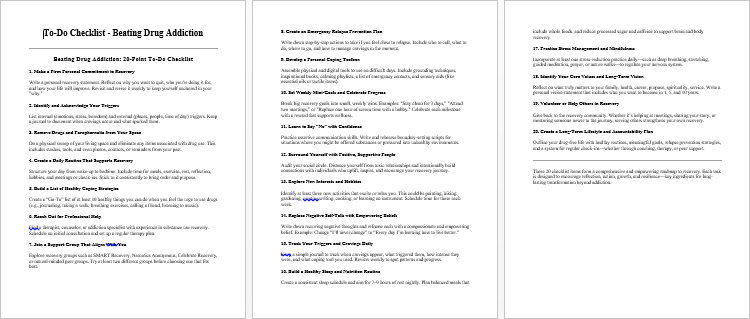
Beating Drug Addiction – FAQs

Beating Drug Addiction – Salespage Content

Package Details:
Word Count: 22 214 Words
Number of Pages: 95
Beating Drug Addiction – Bonus Content
Checklist
Word Count: 756 words
FAQs
Word Count: 954 words
Salespage Content
Word Count: 870 words
Total Word Count: 24 794 Words
Your PLR License Terms
PERMISSIONS: What Can You Do With These Materials?
Sell the content basically as it is (with some minor tweaks to make it “yours”).
If you are going to claim copyright to anything created with this content, then you must substantially change at 75% of the content to distinguish yourself from other licensees.
Break up the content into small portions to sell as individual reports for $10-$20 each.
Bundle the content with other existing content to create larger products for $47-$97 each.
Setup your own membership site with the content and generate monthly residual payments!
Take the content and convert it into a multiple-week “eclass” that you charge $297-$497 to access!
Use the content to create a “physical” product that you sell for premium prices!
Convert it to audios, videos, membership site content and more.
Excerpt and / or edit portions of the content to give away for free as blog posts, reports, etc. to use as lead magnets, incentives and more!
Create your own original product from it, set it up at a site and “flip” the site for megabucks!
RESTRICTIONS: What Can’t You Do With These Materials?
To protect the value of these products, you may not pass on the rights to your customers. This means that your customers may not have PLR rights or reprint / resell rights passed on to them.
You may not pass on any kind of licensing (PLR, reprint / resell, etc.) to ANY offer created from ANY PORTION OF this content that would allow additional people to sell or give away any portion of the content contained in this package.
You may not offer 100% commission to affiliates selling your version / copy of this product. The maximum affiliate commission you may pay out for offers created that include parts of this content is 75%.
You are not permitted to give the complete materials away in their current state for free – they must be sold. They must be excerpted and / or edited to be given away, unless otherwise noted. Example: You ARE permitted to excerpt portions of content for blog posts, lead magnets, etc.
You may not add this content to any part of an existing customer order that would not require them to make an additional purchase. (IE You cannot add it to a package, membership site, etc. that customers have ALREADY paid for.)
Share Now!

